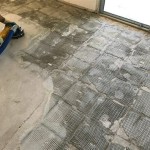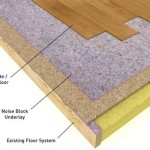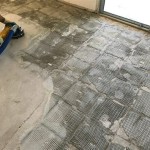Installing Linoleum Flooring for a Fresh Look
Transforming the appearance of your space can be as simple as upgrading your flooring. Linoleum, known for its durability, eco-friendliness, and versatility, is an excellent choice for a fresh and revitalized look. Here's a comprehensive guide to help you navigate the essential aspects of installing linoleum flooring:
Pre-Installation Considerations
Subfloor Preparation: Ensure the subfloor is level, stable, dry, and free of any irregularities. Check for moisture issues and address them appropriately.
Allowance for Expansion: Leave a 1/4-inch gap around the perimeter of the room to accommodate expansion and contraction.
Adhesive Selection: Choose an adhesive specifically designed for linoleum flooring, considering factors such as subfloor type and foot traffic.
Installation Process
Laying the Linoleum: Starting from the center of the room, gently unroll and position the linoleum sections. Press them firmly into place, aligning the edges carefully.
Adhesive Application: Using a notched trowel, spread the adhesive evenly over the subfloor, following the manufacturer's instructions.
Installing the Linoleum: Carefully lift the linoleum section, apply adhesive to the exposed subfloor, and press it back into place.
Rolling and Weighting: Use a heavy roller or weights to ensure proper adhesion. Roll over the entire surface thoroughly to remove any air pockets.
Trimming and Finishing
Edging and Baseboard Installation: Trim excess linoleum around the perimeter and install baseboards to cover the expansion gap.
Sealing and Maintenance: Apply a sealant or wax to protect the linoleum from moisture and wear. Regular cleaning and maintenance will extend its lifespan.
Advantages of Linoleum Flooring
Durability: Linoleum is highly resistant to wear and tear, making it suitable for high-traffic areas.
Eco-Friendliness: Made primarily from natural materials such as linseed oil, cork, and wood flour, linoleum is a sustainable flooring option.
Versatility: Linoleum comes in a wide range of colors, patterns, and textures, offering endless design possibilities.
Hygiene and Safety: Linoleum's antibacterial and anti-allergic properties make it ideal for healthcare facilities, kitchens, and other sensitive areas.
Conclusion
Installing linoleum flooring is a cost-effective and transformative upgrade that can enhance the aesthetics and functionality of your space. By following the essential aspects outlined in this guide, you can successfully install linoleum flooring that will provide years of beauty and durability.

Linoleum Flooring Pros And Cons Forbes Home

Handy How To Guide For Installing L Stick Tile Over Linoleum

How To Install Linoleum Flooring

How To Install Luxury Vinyl Tile Over Linoleum Noting Grace

How To Prepare A Concrete Floor For Vinyl Flooring Parrys

Tips For Diy Flooring Projects Everything You Need To Know

Can You Lay Tile Over Linoleum Rubi Blog Usa

A 2024 Guide To Linoleum Flooring And Why Designers Love It

4 Tips To Keep Your Vinyl Plank Flooring Looking New Deerfoot Carpet
Everything You Need To Know About Vinyl Flooring Tarkett
See Also







